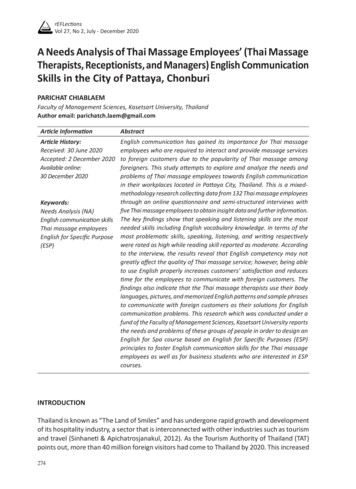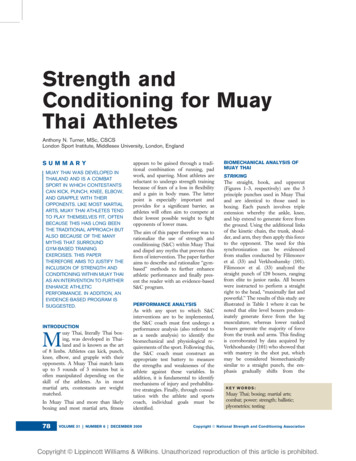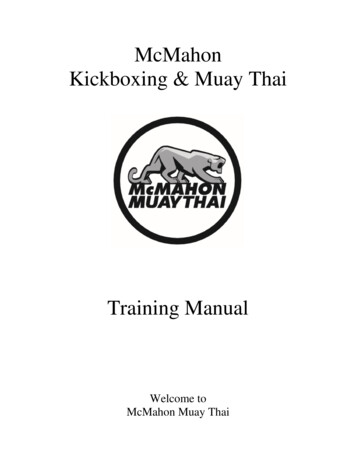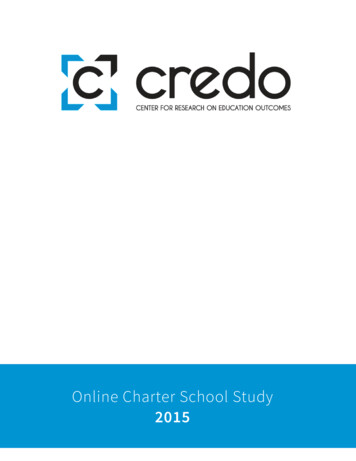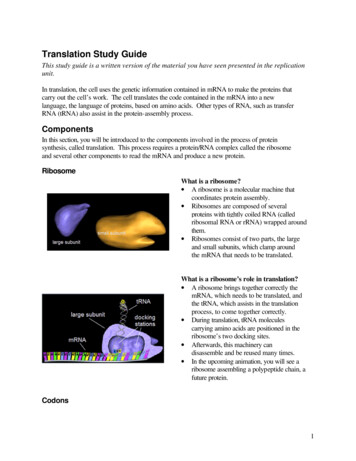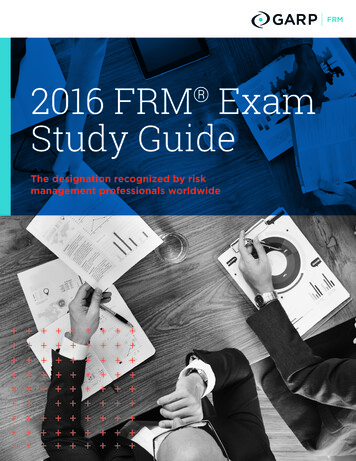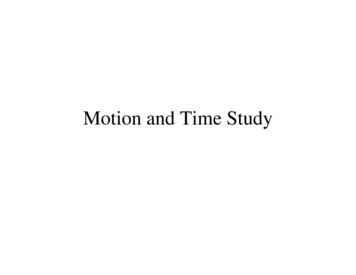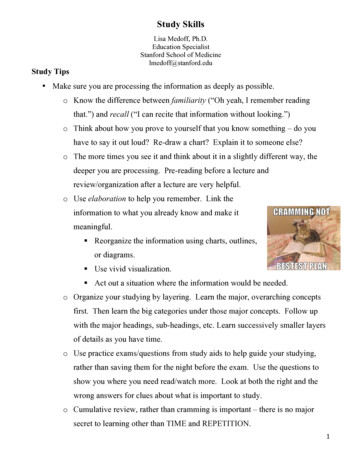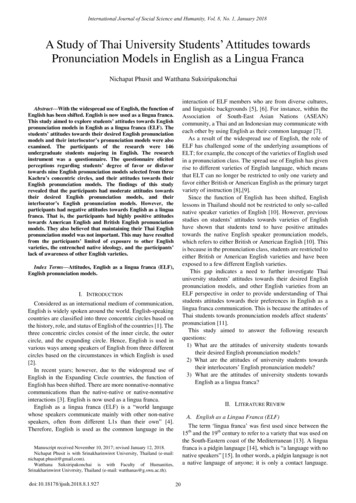
Transcription
International Journal of Social Science and Humanity, Vol. 8, No. 1, January 2018A Study of Thai University Students‟ Attitudes towardsPronunciation Models in English as a Lingua FrancaNichapat Phusit and Watthana Suksiripakonchai interaction of ELF members who are from diverse cultures,and linguistic backgrounds [5], [6]. For instance, within theAssociation of South-East Asian Nations (ASEAN)community, a Thai and an Indonesian may communicate witheach other by using English as their common language [7].As a result of the widespread use of English, the role ofELF has challenged some of the underlying assumptions ofELT; for example, the concept of the varieties of English usedin a pronunciation class. The spread use of English has givenrise to different varieties of English language, which meansthat ELT can no longer be restricted to only one variety andfavor either British or American English as the primary targetvariety of instruction [8],[9].Since the function of English has been shifted, Englishlessons in Thailand should not be restricted to only so-callednative speaker varieties of English [10]. However, previousstudies on students‟ attitudes towards varieties of Englishhave shown that students tend to have positive attitudestowards the native English speaker pronunciation models,which refers to either British or American English [10]. Thisis because in the pronunciation class, students are restricted toeither British or American English varieties and have beenexposed to a few different English varieties.This gap indicates a need to further investigate Thaiuniversity students‟ attitudes towards their desired Englishpronunciation models, and other English varieties from anELF perspective in order to provide understanding of Thaistudents attitudes towards their preferences in English as alingua franca communication. This is because the attitudes ofThai students towards pronunciation models affect students‟pronunciation [11].This study aimed to answer the following researchquestions:1) What are the attitudes of university students towardstheir desired English pronunciation models?2) What are the attitudes of university students towardstheir interlocutors‟ English pronunciation models?3) What are the attitudes of university students towardsEnglish as a lingua franca?Abstract—With the widespread use of English, the function ofEnglish has been shifted. English is now used as a lingua franca.This study aimed to explore students’ attitudes towards Englishpronunciation models in English as a lingua franca (ELF). Thestudents’ attitudes towards their desired English pronunciationmodels and their interlocutor’s pronunciation models were alsoexamined. The participants of the research were 146undergraduate students majoring in English. The researchinstrument was a questionnaire. The questionnaire elicitedperceptions regarding students’ degree of favor or disfavortowards nine English pronunciation models selected from threeKachru’s concentric circles, and their attitudes towards theirEnglish pronunciation models. The findings of this studyrevealed that the participants had moderate attitudes towardstheir desired English pronunciation models, and theirinterlocutor’s English pronunciation models. However, theparticipants had negative attitudes towards English as a linguafranca. That is, the participants had highly positive attitudestowards American English and British English pronunciationmodels. They also believed that maintaining their Thai Englishpronunciation model was not important. This may have resultedfrom the participants’ limited of exposure to other Englishvarieties, the entrenched native ideology, and the participants’lack of awareness of other English varieties.Index Terms—Attitudes, English as a lingua franca (ELF),English pronunciation models.I. INTRODUCTIONConsidered as an international medium of communication,English is widely spoken around the world. English-speakingcountries are classified into three concentric circles based onthe history, role, and status of English of the countries [1]. Thethree concentric circles consist of the inner circle, the outercircle, and the expanding circle. Hence, English is used invarious ways among speakers of English from three differentcircles based on the circumstances in which English is used[2].In recent years; however, due to the widespread use ofEnglish in the Expanding Circle countries, the function ofEnglish has been shifted. There are more nonnative-nonnativecommunications than the native-native or native-nonnativeinteractions [3]. English is now used as a lingua franca.English as a lingua franca (ELF) is a “world languagewhose speakers communicate mainly with other non-nativespeakers, often from different L1s than their own” [4].Therefore, English is used as the common language in theII. LITERATURE REVIEWA. English as a Lingua Franca (ELF)The term „lingua franca‟ was first used since between theth15 and the 19th century to refer to a variety that was used onthe South-Eastern coast of the Mediterranean [13]. A linguafranca is a pidgin language [14], which is “a language with nonative speakers” [15]. In other words, a pidgin language is nota native language of anyone; it is only a contact language.Manuscript received November 10, 2017; revised January 12, 2018.Nichapat Phusit is with Srinakharinwirot University, Thailand (e-mail:nichapat.phusit@gmail.com).Watthana Suksiripakonchai is with Faculty of Humanities,Srinakharinwirot Univrrsity, Thailand (e-mail: watthanas@g.swu.ac.th).doi: 10.18178/ijssh.2018.8.1.92720
International Journal of Social Science and Humanity, Vol. 8, No. 1, January 2018Therefore, a lingua franca is a contact language that serves asa means of communication among people whose firstlanguage is different [13], [14].Turning to English as a lingua franca (ELF), ELF is “anyuse of English among speakers of different first languages forwhom English is the communicative medium of choice, andoften the only option” [16]. Today, ELF is used in a number offields in which English is used as the mutual language ofchoice, such as science, politics, business, and education.ELF is different from other English language teaching(ELT) terms. For example, ELF is different from English as asecond language (ESL) because ELF is a local or contactlanguage between national groups while ESL is a languageused within national groups [16]. Besides, the concept ofELF is also different from the concept of English as a foreignlanguage (EFL) because it receives errors in a different way.In EFL, errors are any deviations from learning to benear-native competence. In ELF, on the other hand, the sameerrors may be considered as different variants [16], [17].However, it does not mean that an English variety based onELF is inferior to other varieties. ELF is “different but notdeficient” [14]. This means that ELF speakers have the abilityto utilize unused possibilities of English such as morphology,syntax, and phraseology [14].Therefore, the speakers from the Expanding Circles in Asiasuch as China, Japan, Korea, and Thailand would benefit fromthe awareness raising of the emerging role of ELF from theappropriate use of code switching and accommodationstrategies, as ELF can be regarded as a useful communicativeinstrument that allows its users to be understood ininternational communication [18]. This means that for Thaistudents, the presence of ELF will help them to developstrategies to adapt and accommodate to English in the Thaicontext, and allow them to be more confident in usingEnglish.findings indicated that attitude is one of the crucial elementsof language learning [26]. As a result, attitude can influencestudents‟ success or failure in their learning. It means thatstudents with positive attitudes towards the language they arelearning will tend to do better than students with negativeattitudes [26], [27].C. Teaching and Learning English Pronunciation inThailandSince 1996, English has been prescribed by law as acompulsory subject for all primary schools in Thailand due tothe significance of English as the major foreign language inthe curricula of educational institutions of Thailand [28]. Ingeneral, most English lessons conducted in Thailand followthe traditional teaching model based on the inner circleteaching norms namely British or American English teaching.This is supported by [29] who explains that the evaluation andmeasurement of English language teaching in Thailand areconducted based on the inner circle countries‟ baseline; thus,it becomes the major model of English teaching.Similarly, the direction of teaching English to secondlanguage learners is affected by assessment which is based onthe first language norms [30]. Consequently, these teachingnorms affect the main goal of teaching English in Thailand.For instance, as far as pronunciation is concerned, Thaistudents‟ pronunciation aim is to master or approximatenative-like. However, the native-like pronunciation modelsmay not be appropriate as the only standard pronunciationmodels for Thai students to follow [31]. This is because thedifferent phonological systems between English and Thailanguage can affect students‟ English pronunciationperformance [31].Besides, it can be said that the inner circle teaching normplays a significant role in influencing Thai students‟ attitudestowards their use of English, for example in choosing theirpronunciation model. Scholars [32], [33] found that Thaistudents preferred to learn and use American English andBritish English than Thai English or any other varieties ofEnglish. To be precise, the inner circle teaching norms affectstudents‟ attitudes towards their use of English and theirultimate goal of learning English in Thailand.Although Thai students have learned English for manyyears, Thai educators indicate that Thai students‟ Englishpronunciation performance is unsatisfactory. The majorreason that causing Thai students‟ English pronunciationproblems is that students have insufficient exposure to theEnglish language [34]. Moreover, there are other factorsrelated to teachers and learners, as well as the differentlanguage systems between Thai and English language.However, in a globalized society and in reality, Thai studentsdo not only communicate with speakers from the inner circlebut also from the outer circle and the expanding circlecountries. Therefore, for English teaching in Thailand,intelligibility should be encouraged as the students‟ learninggoal as opposed to acquiring native-like pronunciation.Moreover, Thai students should have more opportunities tobe exposed to various varieties of English rather than onespecific variety of English.B. AttitudesTheorists have defined the concept of attitude in variousways. For example an attitude is an inner mental componentwhich is expressed through “beliefs, verbal statements orreactions .and in various other aspects of behaviour” [19].The attitude is also defined as “a mental and neural state ofreadiness” [20]. Attitude is organized through experience,and influenced by personal response to all related objects andsituations [20]. However, attitude was also defined from adifferent perspective. It was defined as a hypotheticalconstruct because attitude is used to describe the direction andexistence of human behavior [21]. On the other hand, theattitude concept has been narrowed down to “its evaluativecomponent” [22]. Another definition of attitude is “apsychological tendency that is expressed by evaluating aparticular entity with some degree of favor or disfavor" [23].Because this research focused on attitudes towards Englishpronunciation models, an attitude refers to a positive ornegative belief of the speakers towards pronunciation models.With regard to language learning, studies of attitudes havegained attention since 1960‟s [13]. Attitudes have significantrelationships with foreign language learning achievement [24].Several studies of attitude have focused on positive ornegative outcome on language learning [25], and their21
International Journal of Social Science and Humanity, Vol. 8, No. 1, January 2018III. RESEARCH METHODOLOGYEnglish, Australian English and Singaporean Englishpronunciation models. However, the participants had highlypositive attitudes towards American English, and BritishEnglish pronunciation models. Moreover, the results showedthat the participants had negative attitudes towards PilipinoEnglish, Indian English, Chinese English, and Korean Englishpronunciation models.Besides, this study also examined students‟ attitudestowards their interlocutor‟s pronunciation models. Theresults of the questionnaire revealed that the participants hadmoderate attitudes towards their interlocutor‟s pronunciationmodels. Additionally, it showed that the participants hadmoderate attitudes towards their interlocutor‟s Thai English,Pilipino English, and Singaporean English pronunciationmodels. However, the participants had highly positiveattitudes towards their interlocutor‟s American English andBritish English pronunciation models and positive attitudestowards their interlocutor‟s Australian English pronunciationmodels. Furthermore, the participants had negative attitudestowards Indian English, Chinese and Korean Englishpronunciation models.Lastly, this study explored the students‟ attitudes towardsEnglish as a lingua franca. In terms of students‟ preference inEnglish pronunciation models, the findings showed that themajority of the participants preferred American English,British English, and Australian English pronunciation modelsas they listed these models as their first three favorite Englishpronunciation models. Moreover, the participants were infavor of aiming to have American English as their Englishpronunciation model. They also believed that AmericanEnglish pronunciation models should be used when teachingEnglish in Thai school. Furthermore, the participants wouldencourage their future students to have American Englishpronunciation models. Th
relationships with foreign language learning achievement [24]. Several studies of attitude have focused on positive or negative outcome on language learning [25], and their findings indicated that attitude is one of the crucial elements of language learning [26]. As a result, attitude can influence
